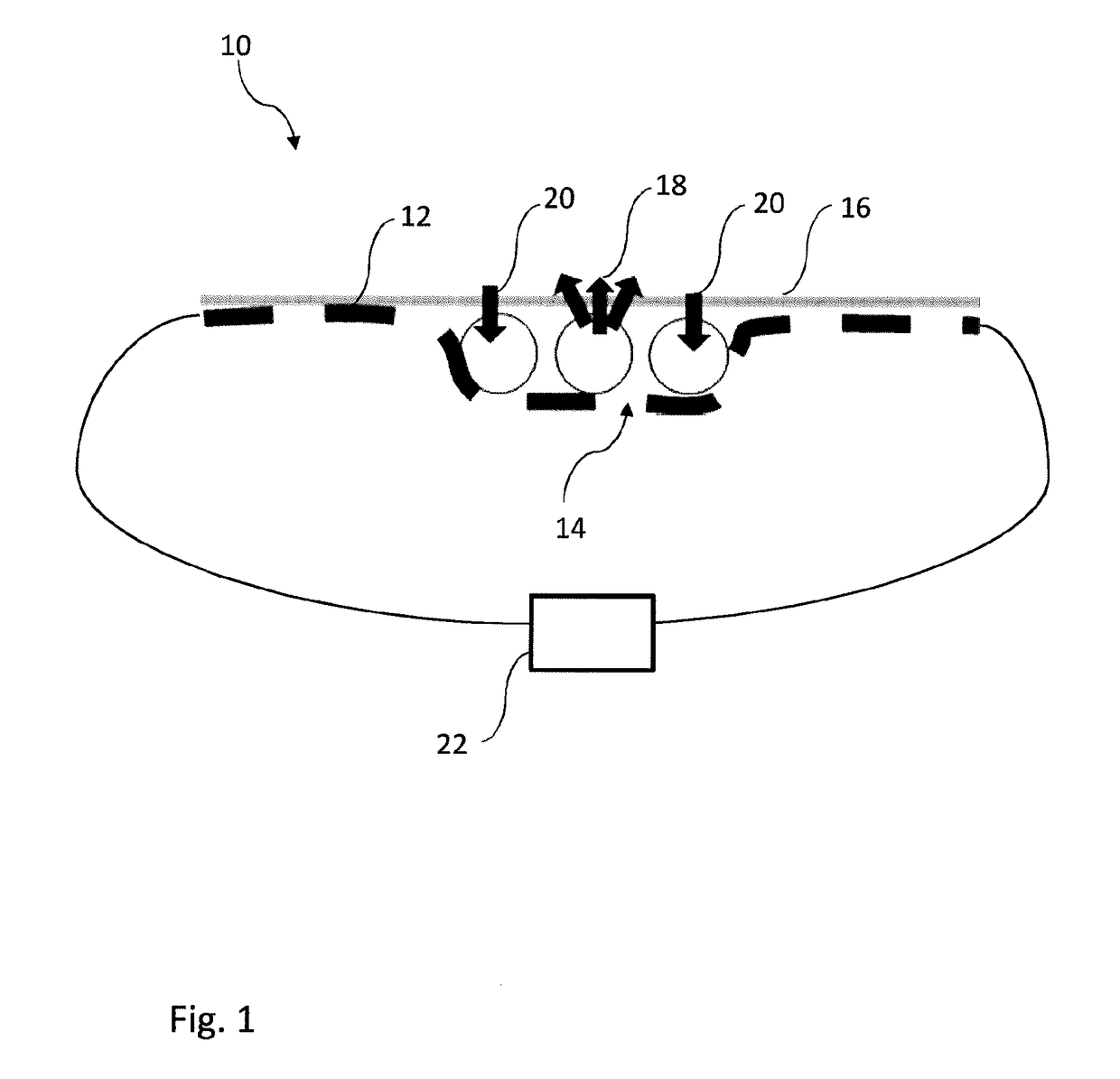Combined textile pressure and optic sensor
a textile and optic sensor technology, applied in the field of sensors, can solve the problems of difficult creation of textile-based sensor systems that interact with humans or animals, inability to detect human or animal movements, etc., and achieve the effect of eliminating motion artefacts
- Summary
- Abstract
- Description
- Claims
- Application Information
AI Technical Summary
Benefits of technology
Problems solved by technology
Method used
Image
Examples
example 1
rporating the Combination Sensor to Create an Ambulatory CRT Measurement Device for the Sole of a Wearer's Foot
[0116]A combination sensor is incorporated into a sock manufactured from a form-fitting textile. The combination sensor monitors physiological parameters of the sole of a wearer's foot. Wearers are particularly at risk people who may suffer from diabetic foot ulcers. This is useful in diagnosing and monitoring the onset of diabetic foot ulcers. Such a sock can also be used in place of conventional pedobarography equipment and to determine efficacy of plantar pressure relieving orthotics.
[0117]The fabric of the sock comprises the textile sensor, while the fibre optic sensor is laid into the sock accordingly. A coaxial configuration FOS is incorporated to be in contact with the wearer's foot at the points illustrated in FIG. 13. The coaxial configuration FOS each comprises a single pair of plastic optical fibres having a diameter of 500 μm. The first sensing area is in the re...
PUM
 Login to View More
Login to View More Abstract
Description
Claims
Application Information
 Login to View More
Login to View More - R&D
- Intellectual Property
- Life Sciences
- Materials
- Tech Scout
- Unparalleled Data Quality
- Higher Quality Content
- 60% Fewer Hallucinations
Browse by: Latest US Patents, China's latest patents, Technical Efficacy Thesaurus, Application Domain, Technology Topic, Popular Technical Reports.
© 2025 PatSnap. All rights reserved.Legal|Privacy policy|Modern Slavery Act Transparency Statement|Sitemap|About US| Contact US: help@patsnap.com



